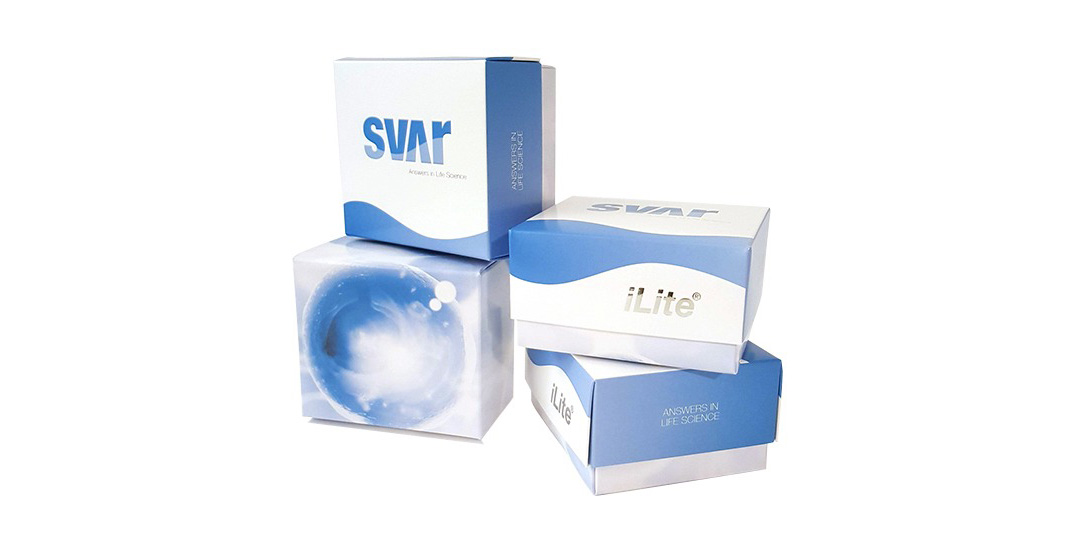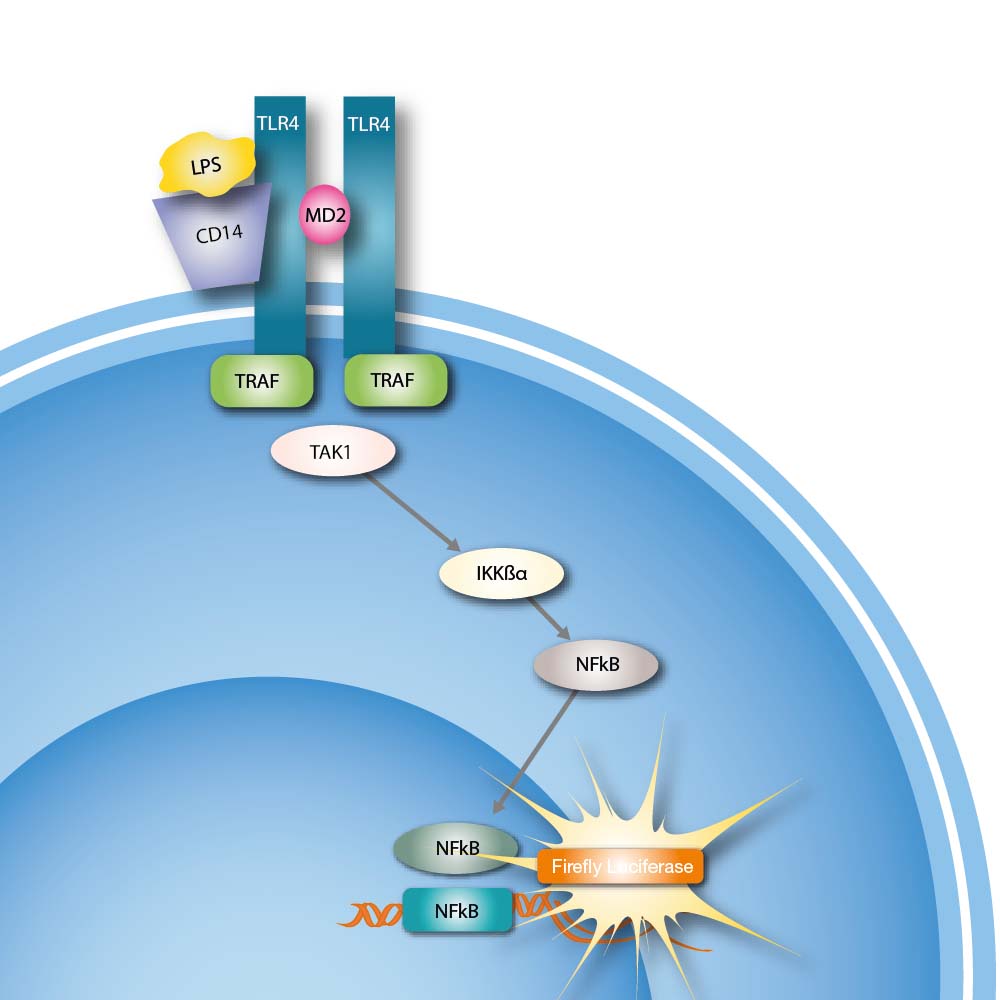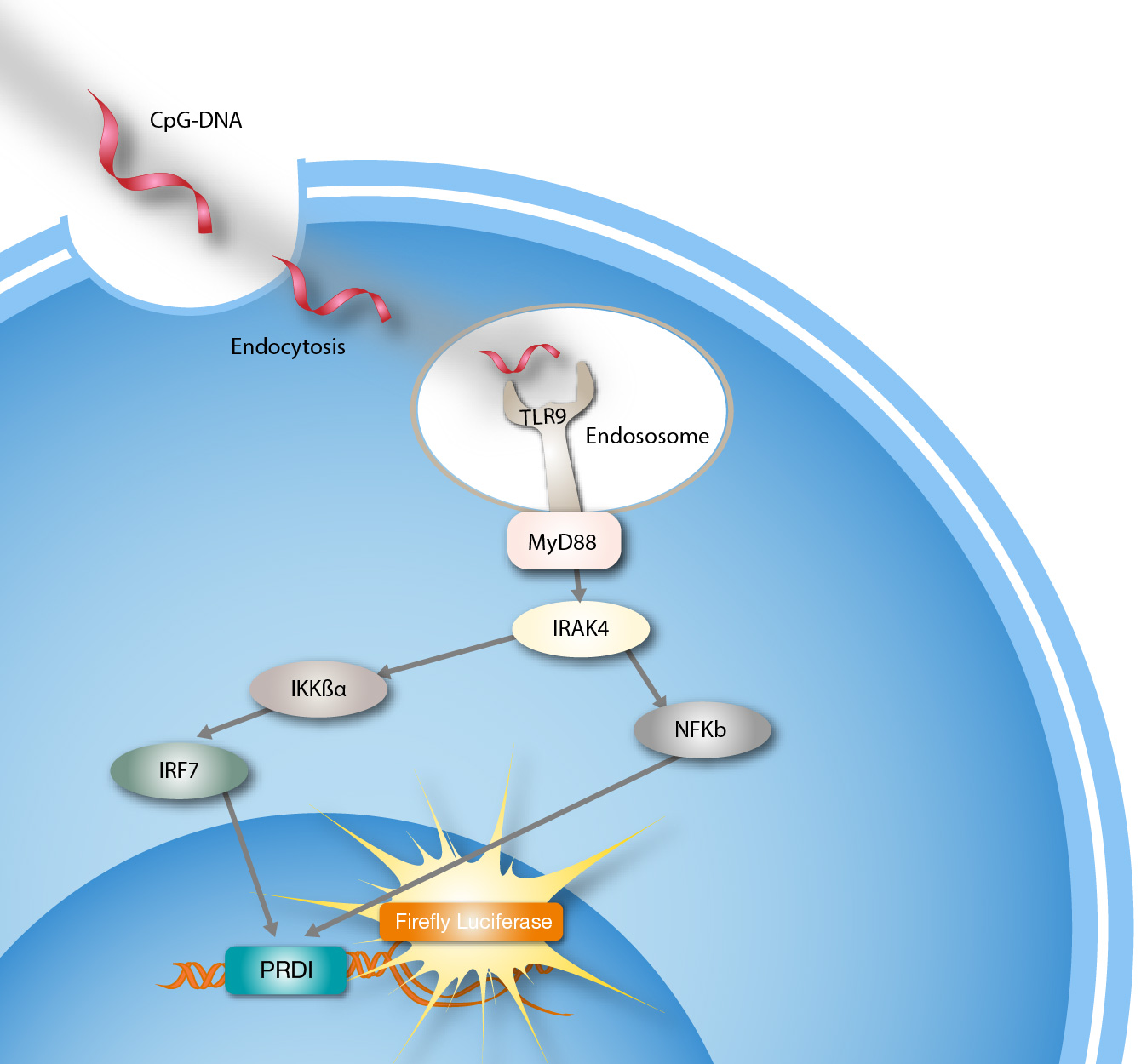- Other Products
- CCP
Stimulation of Toll-like receptors (TLRs) to activate the innate immune system has been a legitimate therapeutic strategy for some years. Several TLRs, namely 3, 4, 7, 8, and 9, are validated targets for cancer, and pharmaceutical companies are actively developing TLR agonists and vaccine adjuvants.
We have developed two new reporter gene assays, iLite TRL 4 and iLite TLR9, that can be used in assays studying these potential therapeutic agents.


Stimulation of Toll-like receptors (TLRs) to activate the innate immune system has been a legitimate therapeutic strategy for some years. Several TLRs, namely 3, 4, 7, 8, and 9, are validated targets for cancer, and pharmaceutical companies are actively developing TLR agonists and vaccine adjuvants.
We have developed two new reporter gene assays, iLite TRL 4 and iLite TLR9, that can be used in assays studying these potential therapeutic agents.
iLite TRL4 is based on iLite technology, where the cells have been genetically engineered and optimized to be responsive to the binding of LPS to membrane-bound TLR4, resulting in the activation of an NF-κB-responsive Firefly luciferase reporter gene construct. Upon activation, Firefly luciferase expression is proportional to the amount of bound LPS.
The iLite TLR4 Assay Ready Cells can be used to detect the presence of LPS in a solution and can therefore be used to detect potential impurities from products obtained from bacterial lysis processes. Moreover, as TLR4 participates in the activation of the innate immune system, there is increased interest in the development of new molecules that can reduce TLR4 signaling for diseases, such as cancer, acute kidney injury or intestinal inflammation are increasing. These findings strongly support the idea that the regulation of TLR4 may be a promising target for therapeutic control of inflammatory-related disorders.

Overview of the iLite TRL4 cell line. Binding of LPS to membrane-bound TLR4 results in the activation of an NF-κB-responsive Firefly luciferase reporter gene construct.
In iLite TLR9 cells, the binding of TLR9 to unmethylated CpG motifs results in the activation of an NF-κB-responsive Firefly luciferase reporter gene. In both cell lines, normalization of cell counts and serum matrix effects are obtained using a secondary Renilla Luciferase reporter gene under the control of a constitutive promoter.

Overview of the iLite TRL9 cell line. Binding of TLR9 to unmethylated CpG motifs results in the activation of an NF-κB-responsive Firefly luciferase reporter gene.
iLite TLR9 Assay Ready Cells can be utilized for the quantification of TLR9 inhibitor activity in test samples, including human serum. As TLR9 participates in the activation of the innate immune system, there is substantial potential in the use of TLR9 agonists as vaccine adjuvants and as mono- or combination therapies for the treatment of cancer and infectious and allergic diseases.
Both cell lines are provided in an “assay-ready” format for a rapid and convenient workflow. The assay ready format also reduces assay variability, optimizing their use in screening, characterization, stability and potency studies.